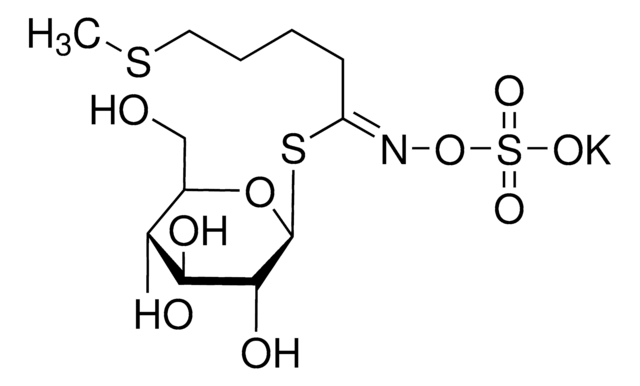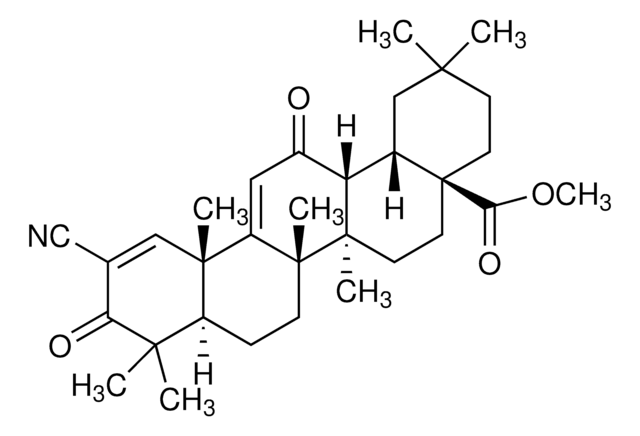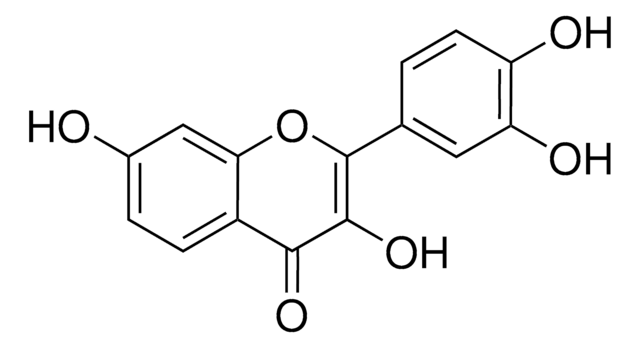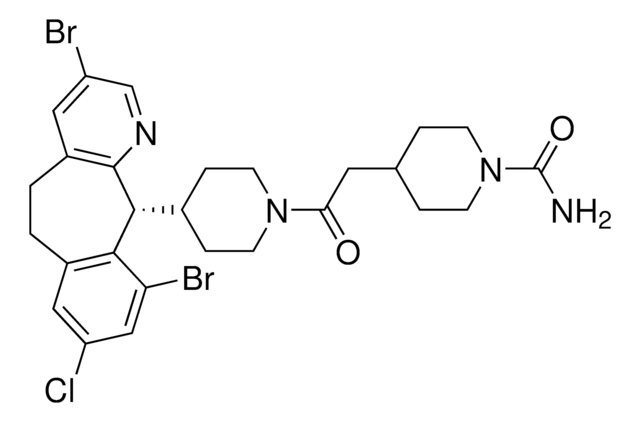Key Documents
S4441
D,L-Sulforaphane
≥90% (HPLC), liquid, phase II detoxification enzymes inducer
Synonim(y):
1-Isothiocyanato-4-(methylsulfinyl)-butane
About This Item
Polecane produkty
product name
DL-Sulforaphane, ≥90% (HPLC), synthetic, liquid
pochodzenie biologiczne
synthetic
Poziom jakości
Próba
≥90% (HPLC)
Postać
liquid
rozpuszczalność
DMSO: soluble 40 mg/mL
H2O: insoluble
kompatybilność
for use with ABI 7500
Warunki transportu
dry ice
temp. przechowywania
−20°C
ciąg SMILES
CS(=O)CCCCN=C=S
InChI
1S/C6H11NOS2/c1-10(8)5-3-2-4-7-6-9/h2-5H2,1H3
Klucz InChI
SUVMJBTUFCVSAD-UHFFFAOYSA-N
Zastosowanie
Działania biochem./fizjol.
Kod klasy składowania
10 - Combustible liquids
Klasa zagrożenia wodnego (WGK)
WGK 3
Środki ochrony indywidualnej
Eyeshields, Gloves, multi-purpose combination respirator cartridge (US)
Certyfikaty analizy (CoA)
Poszukaj Certyfikaty analizy (CoA), wpisując numer partii/serii produktów. Numery serii i partii można znaleźć na etykiecie produktu po słowach „seria” lub „partia”.
Masz już ten produkt?
Dokumenty związane z niedawno zakupionymi produktami zostały zamieszczone w Bibliotece dokumentów.
Klienci oglądali również te produkty
Nasz zespół naukowców ma doświadczenie we wszystkich obszarach badań, w tym w naukach przyrodniczych, materiałoznawstwie, syntezie chemicznej, chromatografii, analityce i wielu innych dziedzinach.
Skontaktuj się z zespołem ds. pomocy technicznej











